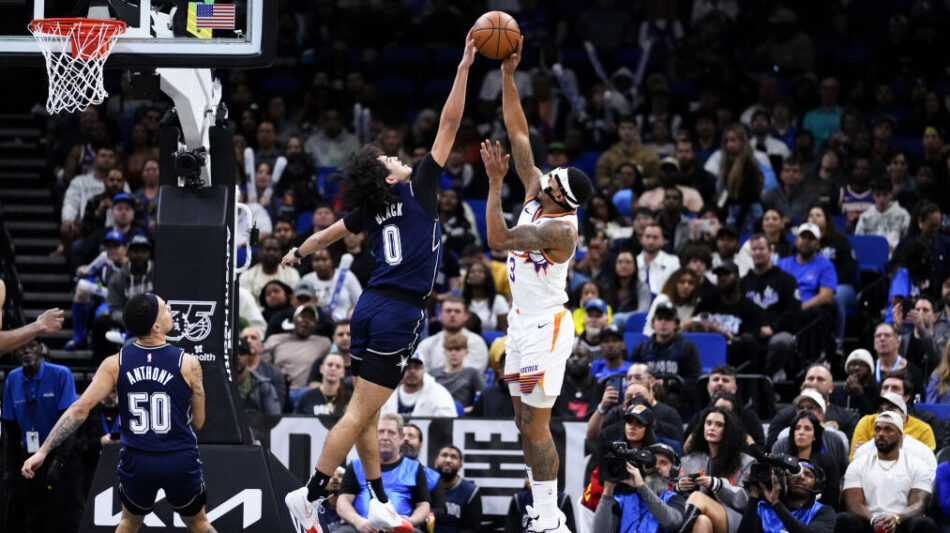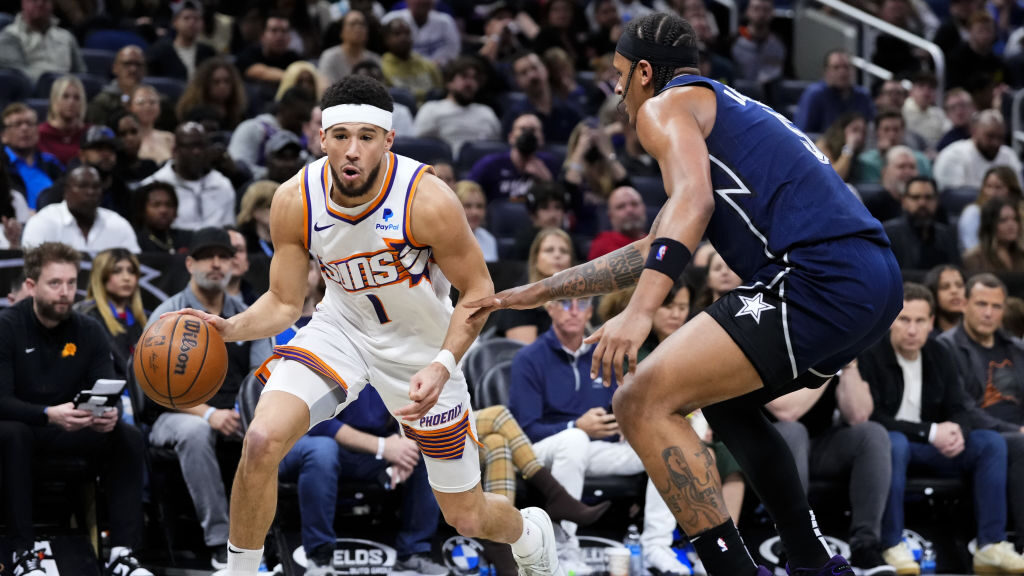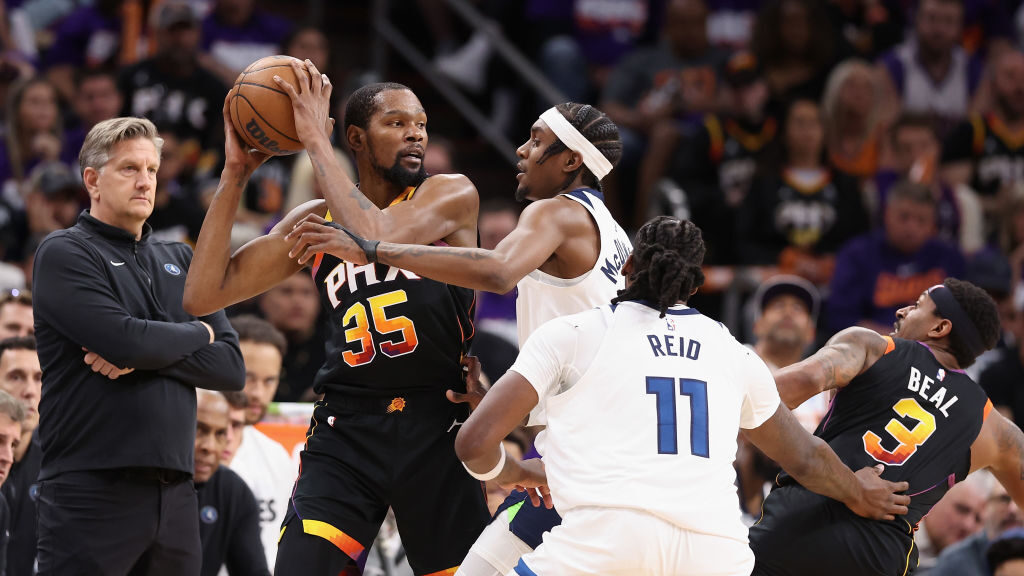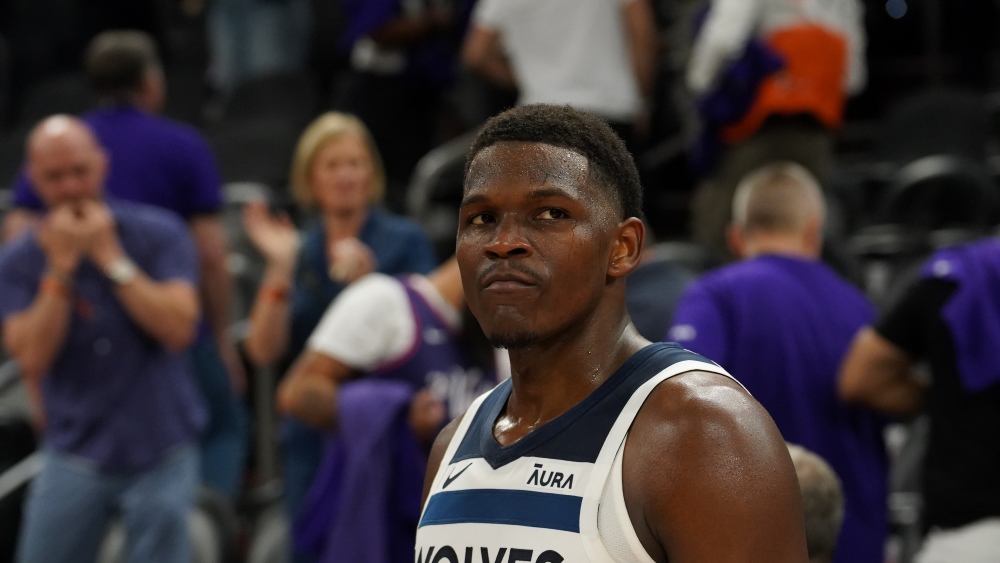By the numbers: What’s up with the Phoenix Suns’ ragged 4th quarters?
Jan 30, 2024, 10:09 AM

Anthony Black #0 of the Orlando Magic blocks a shot by Bradley Beal #3 of the Phoenix Suns during the fourth quarter at Kia Center on January 28, 2024 in Orlando, Florida. (Photo by Rich Storry/Getty Images)
(Photo by Rich Storry/Getty Images)
Through 47 games, the Phoenix Suns have flexed their Big Three at certain points. But they’ve also displayed baffling stretches of zombie-like play, where the offense bogs down and the defense looks more fitting at NBA All-Star weekend.
A lot of the voids in attention to detail and execution have come in the fourth quarters of games.
At times, close games have completely gotten away from the Suns as fast as it took you to step away to pop some popcorn. It happened Sunday in a loss to the Orlando Magic and to a lesser degree Monday in a blowout win against the Miami Heat.
How bad has it been? We’re more than halfway through the season, and while the Big Three haven’t been together for a good chunk of that, it’s time to rehash the more curious issue that’s plagued the Suns both when the depth was thin and when the roster was relatively healthy.
How bad are the Phoenix Suns in the 4th quarter this season?
Let’s start with the context of the entirety of the season and all quarters played. The Suns have inched up to 11th in NET rating as of Tuesday, ranking 10th on offense and 16th on defense. NET is the difference between points scored per 100 possessions and points allowed per 100 possessions.
In NET ratings, the Suns are 12th in the first quarters, fourth in second quarters and third in third quarters. You probably could have guessed the trend considering the slow starts and rallies we’ve seen lately.
Unsurprisingly, the Suns are dead last in NET ratings during the fourth quarter. But surprisingly, they are significantly worse on offense compared to on defense — though they aren’t great on the latter end either.
The NET rating of -16.6 is -6.1 worse than the second-worst fourth-quarter team, the Heat. But while a 119.5 defensive rating is poor — it would be tied for third-worst in the league across all quarters this year — the 102.9 offensive rating in the fourth is excruciatingly bad.
For reference, the Memphis Grizzlies have the worst offensive rating this season at 107.8.
A team for a season hasn’t had an offensive rating below Phoenix’s 2023-24 fourth-quarter mark since the Oklahoma City Thunder of 2020-21. That team went 22-50.
What’s hurting the offense in the 4th?
Turnovers are a big thing. Phoenix has the highest turnover rate (16.5%) during the fourth quarter and allows 5.4 points off turnovers, highest in the league by 0.8 points. But it doesn’t stop there.
The Suns also are tied for last (with the Portland Trail Blazers) in effective field goal percentage (49.7%) that adjusts for threes being worth more than twos. They don’t get to the foul stripe enough to edge more than a spot up the rankings in true shooting percentage, which accounts for all field goals and free throws.
The Suns are shooting 43.5% overall and 31.2% from three in fourth quarters, all while turning it over 3.9 times.
Phoenix’s pace bogs down to 94.04, last in the league during the final period and well below its apprehensive 24th-ranked pace of 98.47 overall.
The Suns are also second-worst in defensive rebounding percentage, and third-worst in total rebounding percentage, meaning the relatively rare stops the team does get don’t always translate to transition offense and pace going the other way.
In other words, all these interconnected things break down.
Have any players specifically struggled in the 4th?
Let’s focus on the key players mostly in this section.
While looking at full-season NET stats could be cherry-picking and not considering lineups and combinations that might reflect poorly on one player to no wrongdoing of their own, there are some interesting tidbits to consider.
Among the Big Three, Durant by far has the worst rating at -19.6. That said, he’s shooting at a decent clip: 49.7% overall and 46.2% from three.
Durant is also credited negatively with more fourth quarters to start the year, when he was the only member of the Big Three healthy and playing.
Beal sits at a -17.1 NET rating. He’s shooting just 35.9% overall in the fourth quarters and turning it over 0.9 times per 8.8 minutes per game. You’d think more time on task will direct that number closer to zero as we go.
Booker is a more reasonable -3.9 in NET.
On the positive end of the spectrum, center Jusuf Nurkic is a near split at a 0.2 NET rating.
Phoenix has gone with small-ball units lately during fourth quarters to switch it up against opponents who want to target the big man on defense and perhaps more importantly space the floor on offense, but the raw numbers indicate he was holding up decently on defense.
Grayson Allen (-12.9) and Eric Gordon (-8.5) have less-than-ideal NET numbers, but those are better than every other role player aside from nine fourth quarters from Bol Bol (-2.6). All those poor rankings have a bit to do with Durant’s unsightly fourth-quarter NET rankings.
And that makes most of the roster untrustworthy, a problem we could have predicted considering the top-heavy makeup.
There are silver linings
The Suns have been bludgeoned badly in the fourth quarter.
But in the times where they have been in clutch time — a five-point game in the final five minutes — the numbers aren’t as bad.
Phoenix is a reasonable -7.7 in NET rating in the clutch. It’s 21st overall but surprisingly 14th-best on the defensive end.
The Suns are also No. 3 in assist rate, a sign there are offensive execution items to hook onto and improve upon. The bottom-10 turnover rate during clutch time could improve, however.
And finally, the Durant-Beal-Booker three-man lineup has a -0.1 NET rating in the fourth quarter. Not anything of major concern.
Weirdly, it’s the offense that needs to improve. Assuming the personnel and talent, it leaves room for promise that the defense can hold up and the offense will round into form.










